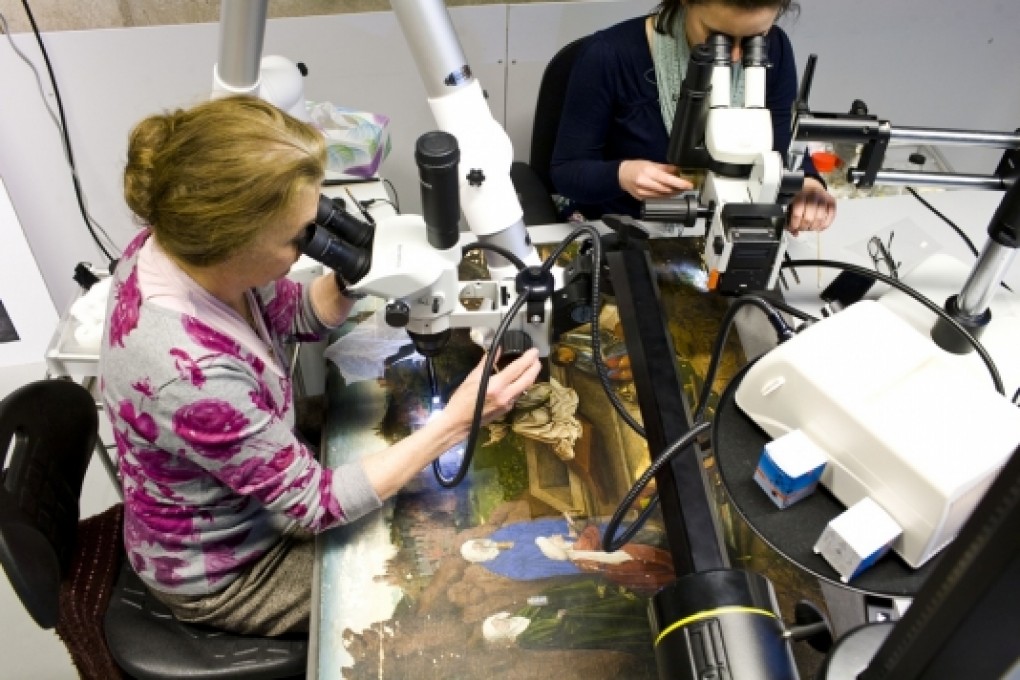More about the research
CHARISMA MOLAB is a mobile laboratory with portable testing equipment, which travels throughout Europe to carry out conservation tests. A major benefit of this kind of investigation is that the artwork itself does not have to travel: the equipment comes to the artwork. MOLAB’s capabilities include a range of spectroscopic tests, in which materials are examined through their interaction with light beams of varying energy. This creates a kind of scan of part of the surface that allows the detection of different molecules and elements. This avoids the need for direct contact with the object and having to take samples from the surface.
There are ten different portable instruments that can be used to gauge the chemical composition of an artwork, enabling the identification of pigments and binding agents. This provides the museum with information about the painting technique and the composition of the various layers of paint and can help the museum to date an artwork. These techniques can also help to confirm the presence of later additions and restorations.
CHARISMA-MOLAB has previously carried out research on ‘The Lamb of God’ by the Van Eyck brothers in Ghent and Piet Mondrian’s ‘Victory Boogie-Woogie’ in the Gemeentemuseum in The Hague.
Click here for more information about CHARISMA-MOLAB.





